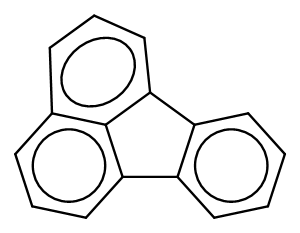
Fluoranthene
CAS No. 206-44-0
Fluoranthene( —— )
Catalog No. M21547 CAS No. 206-44-0
Fluoranthene is a chemical compound.
Purity : >98% (HPLC)
 COA
COA
 Datasheet
Datasheet
 HNMR
HNMR
 HPLC
HPLC
 MSDS
MSDS
 Handing Instructions
Handing Instructions
| Size | Price / USD | Stock | Quantity |
| 25MG | 49 | Get Quote |


|
| 100MG | Get Quote | Get Quote |


|
| 200MG | Get Quote | Get Quote |


|
| 500MG | Get Quote | Get Quote |


|
| 1G | Get Quote | Get Quote |


|
Biological Information
-
Product NameFluoranthene
-
NoteResearch use only, not for human use.
-
Brief DescriptionFluoranthene is a chemical compound.
-
DescriptionFluoranthene is a chemical compound.
-
In Vitro——
-
In Vivo——
-
Synonyms——
-
PathwayOthers
-
TargetOther Targets
-
RecptorOthers
-
Research Area——
-
Indication——
Chemical Information
-
CAS Number206-44-0
-
Formula Weight202.25
-
Molecular FormulaC16H10
-
Purity>98% (HPLC)
-
Solubility——
-
SMILESc(cc1)cc-2c1-c1cccc3cccc2c13
-
Chemical Name——
Shipping & Storage Information
-
Storage(-20℃)
-
ShippingWith Ice Pack
-
Stability≥ 2 years
Reference
1.Reddy P V Karegoudar T B Monisha T R et al. Biodegradation of fluoranthene by Paenibacillus sp. strain PRNK?6: a pathway for complete mineralization[J]. Archives of Microbiology 2017 200(1):1-12.
molnova catalog



related products
-
ATMP
ATMP is a phosphonic acid with chelating properties. It is an antiscalant.
-
Ambazone
Ambazone was found to be active against various transplantable tumors in mice as well as rats.
-
(S)-(+)-ochracin
(S)-(+)-ochracin is a marine derived natural products found in Helicascus kanaloanus.



 Cart
Cart
 sales@molnova.com
sales@molnova.com


